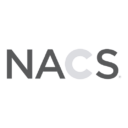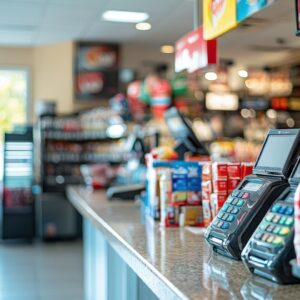
Insights
How to Approach Implementing Autonomous Checkout

As industry discussion around autonomous checkout gains traction, it’s important to understand what autonomous checkout is and how it differs from scan-and-go or self-checkout kiosk checkout models. Under an autonomous checkout model, the consumer doesn’t have to be trained to operate the checkout process. Though autonomous checkout experiences may differ— Amazon’s Just Walk Out requires consumer enrollment (at times identifying consumers via biometric authentication) but does not require the consumer to interact with a POS, while Mashgin’s touchless checkout system does not require enrollment but does require the consumer to interact with a self-checkout terminal — autonomous checkout can offer a cost-effective frictionless experience that leads to higher throughput with less abandonment and more efficient labor.
Why Hasn’t Everybody Implemented Autonomous Checkout?
Though autonomous checkout has demonstrated clear benefits to those who implement it well, the implementation doesn’t come without its challenges. Kevin Struthers, Associate Director of Digital at W. Capra, elaborates, “One of the biggest pitfalls we see in self-checkout implementations is the propensity to treat this new technology as we would treat any other POS terminal. At a minimum, autonomous checkout technology requires pricebook integration. In some cases, autonomous POS providers require images of products to train the system for recognition— in others, the consumer may be required to leverage an app to complete the checkout process.”
When attempting to implement a frictionless experience resembling Just Walk Out, merchants consistently encounter an obstacle when identifying how to put a geo-fence around their store to enable consumers to walk through a gate with their basket. Oftentimes, discussion around an initiative like geo-fencing carries the potential to derail from the greater consumer experience strategy.
It can also be challenging to cue the POS to distinguish between similar items. Specific to convenience, this may require merchants to find varicolored cups/containers that delineate coffee from fountain drinks, cold food from hot. Local products may require additional training to ensure the sale posts with proper cost, tax, and promotional details.
I Don’t Want to Fall Behind, But I’m Not Sure How to Implement Autonomous Checkout
Before redefining your existing consumer experience, evaluate whether the benefits of autonomous checkout are applicable to your business model and your consumer base. Struthers continues, “If you don’t have problems with lines today, or if your business model doesn’t support you handling more throughput while redeploying labor to a higher-value task, then autonomous checkout may not unlock lower costs and more efficient experiences.”
However, if you determine that autonomous checkout carries the potential to reduce friction in your existing experience, it will be essential to consider where you place the devices within your stores to fully capitalize on the benefits. For instance, from an operations standpoint, does it make sense for your business to leverage video-based or advanced analytics, such as Kroger’s adoption of Everseen’s Visual AI technology, to optimize your long-term roadmap?
Autonomous checkout has outlasted its early adopter phase. Organizations that haven’t yet considered how or if autonomous capabilities feature in their retail technology roadmaps may find themselves behind the competition when it comes to providing the experience consumers expect, especially as the phenomenon of expectation transfer traverses across verticals. W. Capra is well-versed in identifying and solving for the various considerations that comprise a reliable strategy and roadmap to implement and optimize autonomous checkout capabilities.
Kevin Struthers, Associate Director of Digital at W. Capra, focuses on assisting his clients on their digital and automation journeys. For further discussion, please contact Kevin at kstruthers@wcapra.com.
Related Insights
Retail Site Technology End-of-Life Timelines: What You Need to Know
Imagine it is March 2026, and every iPhone user is notified that their text messages are being spied on by […]
The Cost of Poor Quality Assurance for Point-of-Sale and Back Office Systems in Petroleum Retail
Quality Assurance (QA) is vital to ensure that those who use the tool daily can replicate basic functions AND access the advanced technology and process automation they were promised during sales demos.
The Crucial Role of Quality Assurance for Rapidly Evolving Retail Petroleum Technology
The petroleum industry is undergoing a period of unprecedented transformation. From the rise of electric vehicles to the adoption of […]
The Changing Role of the CIO
It used to be that a retailer’s chief information officer would spend most of his or her time concerned with […]
Want to stay in touch? Subscribe to the Newsletter










